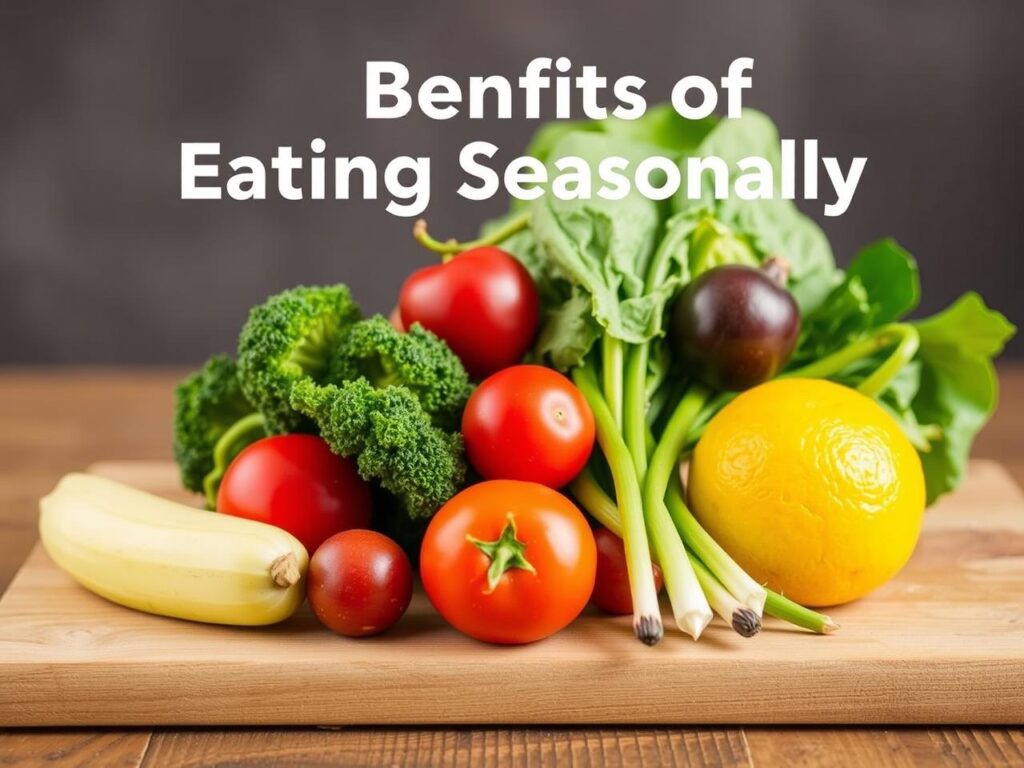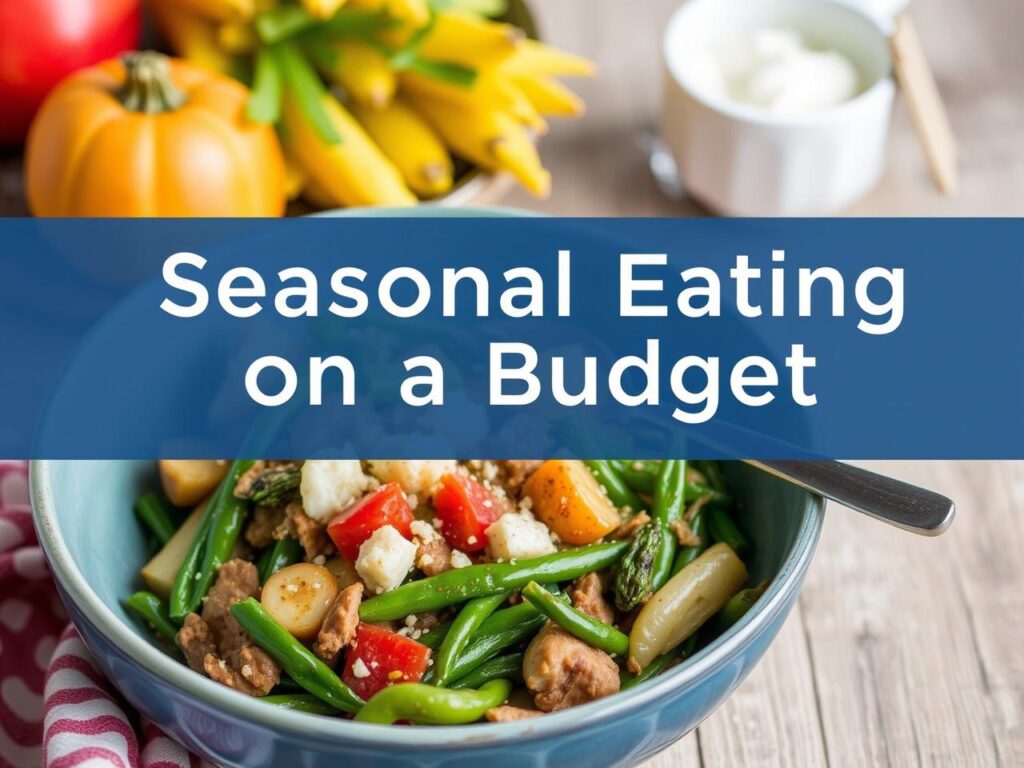How to Eat Seasonally: Simple Strategies for Maximizing Flavor and Nutrition Year-Round
Seasonal eating refers to the consumption of fruits and vegetables during their natural harvest periods. This practice involves consuming produce that has ripened naturally and is harvested at its peak, rather than relying on artificially ripened or imported items. By adopting seasonal eating habits, individuals can support local agriculture, reduce their environmental impact, and benefit from the nutritional advantages of fresh, in-season produce.
This approach aligns with the natural cycles of the earth and allows people to experience the unique flavors and textures associated with each season’s harvest. Eating seasonally promotes the intake of a diverse range of nutrients, as different fruits and vegetables become available throughout the year. For instance, summer offers an abundance of berries and stone fruits, while autumn brings a variety of root vegetables and apples.
This seasonal variation in diet ensures a broad spectrum of vitamins, minerals, and antioxidants, which contribute to overall health and well-being. Furthermore, seasonal eating fosters a greater appreciation for the natural growth and harvest cycles, deepening one’s connection to food sources and the environment in which they are cultivated.
Key Takeaways
- Seasonal eating means consuming fruits and vegetables that are grown and harvested during a specific time of the year.
- Eating seasonally can lead to fresher, more nutritious produce and support local farmers and the environment.
- Look for signs like color, smell, and firmness to identify seasonal produce at the grocery store or farmer’s market.
- Incorporate seasonal produce into your diet by meal planning, trying new recipes, and experimenting with different cooking methods.
- Preserve seasonal produce by freezing, canning, pickling, or dehydrating to enjoy them throughout the year.
Benefits of Eating Seasonally

Fresher and More Flavorful Produce
When you consume fruits and vegetables that are in season, you are getting produce at its peak freshness and flavor. This means that seasonal produce is often more delicious and satisfying than out-of-season options.
More Nutrient-Dense and Better for Your Health
In addition to superior taste, seasonal fruits and vegetables are also more nutrient-dense, as they are allowed to fully ripen on the vine or tree before being harvested. This results in higher levels of vitamins, minerals, and antioxidants, which can support overall health and well-being.
A Positive Impact on the Environment
Another benefit of eating seasonally is the positive impact it has on the environment. By choosing locally grown, seasonal produce, you are reducing the carbon footprint associated with transporting food long distances. This can help to lower greenhouse gas emissions and support sustainable agricultural practices. Additionally, supporting local farmers and producers helps to strengthen the local economy and preserve farmland.
How to Identify Seasonal Produce

Identifying seasonal produce can be a simple and rewarding process. One of the easiest ways to determine what is in season is to visit your local farmers’ market. Farmers’ markets are a great place to find fresh, locally grown fruits and vegetables that are in season.
You can talk to the farmers directly to learn about what is currently being harvested and get tips on how to prepare and enjoy seasonal produce. Additionally, many farmers’ markets offer a wide variety of produce that may not be available at your local grocery store, allowing you to explore new flavors and textures. Another way to identify seasonal produce is to pay attention to what is being advertised and promoted at your grocery store.
Many stores will highlight seasonal items with special displays or signage, making it easy to spot what is currently in season. You can also look for labels indicating where the produce was grown, as locally sourced items are more likely to be in season. Additionally, there are numerous resources available online that provide information on what fruits and vegetables are in season in your region during any given time of year.
By staying informed and being mindful of what is available locally, you can easily identify and enjoy seasonal produce.
Simple Strategies for Incorporating Seasonal Produce into Your Diet
Incorporating seasonal produce into your diet can be a simple and enjoyable process. One of the easiest ways to enjoy seasonal fruits and vegetables is by incorporating them into your meals in creative ways. For example, you can add fresh berries to your morning oatmeal or yogurt, or toss seasonal vegetables into a stir-fry or salad.
By experimenting with new recipes and cooking techniques, you can discover delicious ways to highlight the flavors of each season’s bounty. Another strategy for incorporating seasonal produce into your diet is to preserve it for later use. This can be done through methods such as freezing, canning, or pickling.
By preserving seasonal fruits and vegetables when they are at their peak freshness, you can enjoy them throughout the year and avoid relying on out-of-season options. Preserving produce also allows you to take advantage of bulk quantities when they are available at their peak, saving money and reducing food waste.
Tips for Preserving Seasonal Produce
Preserving seasonal produce is a great way to enjoy the flavors of each season’s bounty all year long. One simple method for preserving produce is freezing. Many fruits and vegetables can be frozen for later use, such as berries, peaches, green beans, and corn.
To freeze produce, simply wash and prepare it as desired, then place it in airtight containers or freezer bags before storing in the freezer. Frozen produce can be used in smoothies, baked goods, soups, and other dishes throughout the year. Another popular method for preserving seasonal produce is canning.
Canning allows you to store fruits and vegetables in jars at room temperature for extended periods of time. This method is great for preserving items like tomatoes, pickles, jams, and salsas. To can produce, you will need specific equipment such as canning jars, lids, and a water bath or pressure canner.
By following proper canning procedures and recipes, you can safely preserve seasonal produce for long-term storage.
Seasonal Eating on a Budget

Shopping at Farmers’ Markets and Joining CSA Programs
One way to eat seasonally on a budget is to shop at farmers’ markets or join a community-supported agriculture (CSA) program. Farmers’ markets often offer competitive prices on locally grown fruits and vegetables, allowing you to stretch your food budget while enjoying high-quality produce.
Buying in Bulk and Preserving Produce
Another budget-friendly strategy for seasonal eating is to buy in bulk and preserve produce for later use. When fruits and vegetables are in season and abundant, they are often available at lower prices. By purchasing larger quantities and preserving them through freezing, canning, or pickling, you can stock up on seasonal items at their peak freshness without breaking the bank.
Enjoying Seasonal Flavors Throughout the Year
This approach allows you to enjoy seasonal flavors throughout the year while saving money on out-of-season options. By eating seasonally and preserving produce, you can savor the flavors of your favorite fruits and vegetables all year round, without straining your budget.
Recipes for Seasonal Eating
Embracing seasonal eating opens up a world of culinary possibilities, allowing you to explore new flavors and textures with each change of the seasons. Here are a few simple recipes that highlight the best of each season’s bounty:
Spring: Asparagus and Pea Risotto
Ingredients:
– 1 cup Arborio rice
– 4 cups vegetable broth
– 1 bunch asparagus, trimmed and cut into 1-inch pieces
– 1 cup fresh or frozen peas
– 1/2 cup grated Parmesan cheese
– 2 tablespoons butter
– 1/4 cup chopped fresh parsley
– Salt and pepper to taste Instructions:
1. In a large saucepan, bring the vegetable broth to a simmer.
2.In another large saucepan or skillet, melt the butter over medium heat.
3. Add the Arborio rice to the skillet and cook for 2-3 minutes until lightly toasted.
4. Add a ladleful of hot broth to the rice and stir until absorbed.
5.Continue adding broth one ladleful at a time, stirring constantly until the rice is creamy and tender.
6. Stir in the asparagus and peas during the last few minutes of cooking.
7. Remove from heat and stir in the Parmesan cheese and parsley.
8.Season with salt and pepper to taste before serving.
Summer: Grilled Peach Salad
Ingredients:
– 4 ripe peaches, halved and pitted
– 6 cups mixed salad greens
– 1/2 cup crumbled feta cheese
– 1/4 cup chopped fresh mint
– 1/4 cup balsamic glaze
– Salt and pepper to taste Instructions:
1. Preheat grill to medium-high heat.
2.Place peach halves on the grill cut side down and cook for 3-4 minutes until grill marks appear.
3. Arrange mixed greens on a serving platter.
4. Top with grilled peaches, feta cheese, and fresh mint.
5.Drizzle with balsamic glaze.
6. Season with salt and pepper before serving.
Fall: Butternut Squash Soup
Ingredients:
– 1 large butternut squash, peeled, seeded, and cubed
– 1 onion, chopped
– 2 cloves garlic, minced
– 4 cups vegetable broth
– 1 teaspoon ground cinnamon
– 1/2 teaspoon ground nutmeg
– Salt and pepper to taste
– Olive oil for cooking Instructions:
1.In a large pot or Dutch oven, heat olive oil over medium heat.
2. Add chopped onion and garlic and cook until softened.
3. Add cubed butternut squash to the pot along with vegetable broth.
4.Bring to a boil then reduce heat and simmer for 20-25 minutes until squash is tender.
5. Use an immersion blender or transfer soup to a blender to puree until smooth.
6. Stir in ground cinnamon and nutmeg.
7.Season with salt and pepper before serving.
Winter: Roasted Root Vegetables
Ingredients:
– 2 large carrots, peeled and cut into chunks
– 2 parsnips, peeled and cut into chunks
– 2 sweet potatoes, peeled and cut into chunks
– 1 red onion, cut into wedges
– 3 tablespoons olive oil
– 2 teaspoons dried thyme
– Salt and pepper to taste Instructions:
1. Preheat oven to 400°F.
2.Place chopped vegetables on a large baking sheet.
3. Drizzle with olive oil and sprinkle with dried thyme.
4. Toss to coat evenly.
5.Season with salt and pepper.
6. Roast in the oven for 30-35 minutes until vegetables are tender and golden brown.
7. Serve as a side dish or add to salads or grain bowls.
These recipes showcase the versatility of seasonal produce while celebrating the unique flavors of each season’s bounty. By embracing seasonal eating, you can enjoy fresh, flavorful meals while supporting local farmers and producers throughout the year.
If you’re looking to revamp your home, you might be considering a bathroom remodel. Check out this article on how much it costs to remodel your bathroom with a jacuzzi bath for some helpful tips and insights. And while you’re at it, why not consider some unique and eye-catching basement ceiling ideas from this article to really make your home stand out?
FAQs
What does it mean to eat seasonally?
Eating seasonally means consuming fruits, vegetables, and other foods that are harvested at the peak of their ripeness during a particular time of the year. This often means enjoying produce that is locally grown and readily available during a specific season.
Why is it important to eat seasonally?
Eating seasonally allows you to enjoy the freshest and most flavorful produce, as well as maximize the nutritional content of your meals. It also supports local farmers and reduces the environmental impact of food transportation.
What are some simple strategies for eating seasonally?
Some simple strategies for eating seasonally include shopping at local farmers’ markets, joining a community-supported agriculture (CSA) program, and familiarizing yourself with the typical harvest times for different fruits and vegetables in your region.
How can eating seasonally maximize flavor and nutrition?
Eating seasonally ensures that you are consuming produce at its peak ripeness, which often results in better flavor and higher nutritional content. Additionally, seasonal produce is typically fresher and has not been stored for long periods of time, preserving its nutrients.
What are the benefits of eating seasonally?
Some benefits of eating seasonally include better-tasting and more nutritious food, support for local farmers and the local economy, reduced environmental impact, and the opportunity to connect with the natural rhythms of the seasons.







